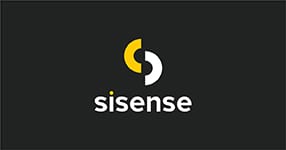
What is personalised analytics?
Personalised analytics provide a unique experience for a user based on information and preferences an organisation knows about the individual.
With an AI-driven analytics platform, there are two layers for personalisation. The first is how the platform creates better personalisation and customisation. Secondly, the platform enables the builder to deliver a personalised and targeted journey to the end-user or customer.
Why is personalised analytics important?
Seamless, personalised experiences are better for both businesses and their customers. Organisations use personalisation to drive product adoption and usage. It allows users to make the right decisions at the right time, no matter where they are in their workflows.
There are many places in the user journey to add personalisation. However, it’s important to ensure the look and feel still communicate your brand essence to your consumers. Users feel your product visually first, and consistent branding will drive engagement and brand recall.
Personalisation becomes more important when integrating third-party software, such as AI-infused analytics, into applications. Without the flexibility to customise or personalise the look and feel of a third-party application, you risk creating a disjointed experience for your customers and end-users.
How can personalised analytics help organisations?
Personalised analytics helps organisations in three ways; provide a seamless experience for the customers, build a customer insights journey and harness staff creativity. Let’s take a look at these in more detail.
Seamless experiences
A seamless user interface can reduce friction for end-users or customers and enhance the user experience. However, customising the UI is just the first step- personalisation takes it even further.
For example, if you deliver analytics to several customers, departments, or teams, you can tailor the visual elements, such as the colours of the analytics view, to each user group based on brand colours or user preferences.
Suppose you are infusing analytics into an application where the user is able to select their own themes. In that case, you want to ensure that the entire application caters to the user’s preferences, including embedded analytics. Customisation capabilities within the integrated analytics software will enable you to change the look and feel of your analytics visually. This can help you tailor the experience for each customer or user group.
Effortless customer insights journey
The length of time to insights and ease of use of the platform are important factors when increasing analytics adoption.
However, not all users have the know-how or the time to find the insights they are looking for. Sometimes, users might not even know what they want.
This is where personalisation and automation can be transformational.
AI and machine learning can help users move from unsystematic self-service requests for insights to developing data-rich expertise via suggested paths. Leveraging these capabilities creates a personalised experience for the end-users and customers. It can reduce staff workload and create better customer experiences.
Harness creativity
Personalisation empowers organisations to get creative with how they build their analytics. It could be something as simple as tailoring dashboards to suit specific teams or departments. Alternatively, it could be comprehensive initiatives like building analytics instantaneously based on user response.
For example, Seismic, a Sisense customer, built role-based dashboards. It ensured that each staff persona (Chief Revenue Officer, Chief Marketing Officer, content owner, etc.) received relevant content. In another example, a large fleet management software provider populated a personalised collection of embedded widgets. As a result, it reduced time for staff when navigating around the software.
Key trends and opportunities
In their ‘Top 10 Data and Analytics Trends for 2021’ list, Gartner forecasts that “dashboards will be replaced with automated, conversational, mobile, and dynamically generated insights customised to a user’s needs and delivered to their point of consumption.”
Ahead of trends, the Sisense Fusion platform already embodies this idea. The platform empowers every user to embrace analytics via actionable intelligence. This is delivered in real-time at the point of use.
For an analyst, developer, marketing or product leader, it’s now crucial to incorporate personalised intelligence for stakeholders in real-time. It empowers stakeholders to see past the noise of the typical dashboard. Instead, they can focus on key insights that they really care about.
Some other trends in personalised analytics include:
Code-free customisation
Organisations can simplify the visual elements of personalised analytics to each customer and end-user with code-free customisation. It allows businesses to rapidly create and group UI customisations at a granular level with a point-and-click experience.
Enhanced live model connection
Enhanced live model connection parameters enable businesses to leverage one live data model for multiple customers. This functionality eliminates the need to manage multiple live models. Customers using the same schema structure can be consolidated. It allows you to make updates for all customers in one place easily.
How savvy businesses are using personalised analytics
Personalised analytics is a rising trend. More than 2,000 customers globally are turning to Sisense to infuse analytics intelligence through their customisable, AI-driven analytics cloud platform.
For example, UK-based Open Banking Reporting (OBR), a data-driven risk management fintech, teamed up with Sisense and data science company Profusion to launch OpenRep. It is a new platform that helps lenders provide better support for SMEs.
“OpenRep uses advanced analytics and robotic automation to deliver real-time automated monitoring, pro-active alerts and actionable insights. This enables Lenders and SMEs to address business risks early, thereby reducing costs and developing stronger business relationships,” said Eddie Curran, CEO of OBR.
“With Sisense, we have been able to develop an early-warning system that can help SME owners and Lenders identify risks and opportunities. It uses the most up-to-date data, and tools and technology, to develop an actionable insight.”
Welcome to the era of personalised analytics
Personalised analytics can help users make better business decisions and improve customer experience. Continued advancements in technology, including AI and machine learning, low-code/no-code capabilities, and open extensible platforms, offer an exciting new range of options to add personalised analytics to businesses of any size or capability.

As a result, more than 2,000 global companies such as GitLab, UiPath, Tinder, Nasdaq, GE, Rolls Royce and Philips Healthcare rely on Sisense to innovate, disrupt markets and drive meaningful change in the world. Ranked as the No. 1 Business Intelligence company in terms of customer success, Sisense has also been named one of the Forbes’ Cloud 100, The World’s Best Cloud Companies, five years in a row. Visit us at www.sisense.com and connect with us on LinkedIn, Twitter, and Facebook.

























